It was once the case that the big acts hardly ever came to Ireland – but that's changed in the past 20 years or so.
Bigger and better venues, and a bit more money in the country, has made Ireland a standard stop for most artists’ European or World Tours – with Bruce Springsteen, Taylor Swift, Coldplay and The Weeknd all making regular visits to these shores.
Beyoncé is no stranger to Ireland, either.
Since she started touring as a solo artist in 2003 she’s put on 15 shows on the island – including two in Belfast and one in Croke Park.
But Ireland hasn’t gotten a look in this time around.
Why not?
We need your consent to load this rte-player contentWe use rte-player to manage extra content that can set cookies on your device and collect data about your activity. Please review their details and accept them to load the content.Manage Preferences
In short – we can’t handle this.
A Beyoncé gig is always a big production – and this tour is bigger than ever.
When you look at the tour credits on her website, you’d be forgiven for thinking it was actually the credits list for a feature film.
Within the list are 20 dancers, 5 costume designers, 25 working in wardrobe, another five credited as 'glam’, 17 names in choreography and staging.
And they’re just some of the people involved in what’s happening on the stage. It doesn’t include the work involved in putting together the stage itself.
The Renaissance Tour is based around two massive stages, with thousands of lights, massive flat screen displays showing specially-produced content, and all the pyrotechnics and special effects that you could imagine.
To make that happen you need big lighting teams, video producers, lots of audio producers, and camera crews to capture and replay it all on the screens (and save it for the eventual concert film and documentary).
And the stage has to be physically put together – there are 60 names on the ‘steel and advance teams’ who would go and set up the show in each venue.
There are also 15 caterers to feed all of these people; not including the 2 chefs assigned to the ‘artist’.
There are also three nurses, 2 physios and 17 security personnel that travel with the tour, as well as four people in charge of ‘dressing room/ambience'.
And of course all of those people have to be transported from A to B – so you also have 40 drivers who are bringing all the limos and big rigs full of staging equipment around Europe and North America over the course of the tour.
So it's a massive operation...
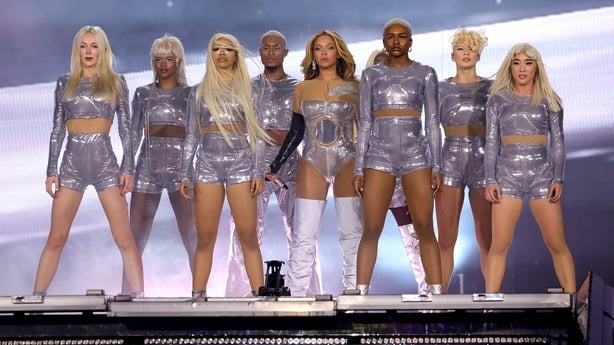
Absolutely – the team involved is huge, and so are the costs.
Not only does all of that staging and equipment have to be bought, hired or constructed, it also has to be transported. All of the workers involved of course have to be paid, fed, accommodated and transported too.
And to make that viable, you need the shows to be at a similar scale. If you look at where she is playing, you can see what that means.
The venues she’s playing in mainland Britain, for example, are all large soccer and rugby stadia – generally each with a capacity north of 60,000.
And she’s doing 8 British shows in total – so you’re talking the guts of half a million tickets up for grabs.
It’s the same once she crosses the channel to mainland Europe – the venues are anywhere between 50,000 and 80,000 seaters. When you put all the dates together you’re again getting more than half a million tickets.
And perhaps the key is that, once the Beyonce machine landed in Europe, every venue was relatively easy to get to from the last.
By road they could cover 8 shows, sell tickets to half a million fans, then maybe get on the ferry or the Eurostar to Europe, and do the same again on the mainland.
Why couldn’t it nip across the Irish Sea too?
Even if it had gotten the ferry to Ireland it’s hard to see a scenario where it would have been able to put on the shows at a big enough scale to justify the trip.
Croke Park is the only place we have that can manage audiences in the 70-80,000s.
It’s hard to know if inquiries were made about doing that, but even if they were it probably wouldn’t have been a runner anyway.
The condensed GAA calendar this year means the stadium has at least one, if not two, matches on almost every weekend from April through to the middle of August.
So finding a gap big enough for the stadium to be reconfigured for a big concert or concerts, and then put back to its original state in time for the next fixture would have been very difficult.
But even had she come here, the tickets probably would have been more expensive...
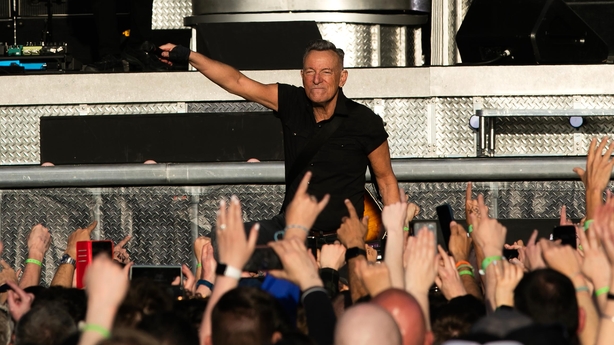
This is a trend we see time and again when Ireland is included in a big world tour – the tickets are often more expensive, and sometimes considerably more expensive, than those in mainland Europe.
The recent Bruce Springsteen gigs are a great example – tickets cost between €96 and €156 each for the RDS shows.
Tickets for his upcoming show in Norway – which isn’t known for being a cheap country – and there were tickets starting at €76...Tickets in Germany started at €60.
In fairness, in some countries the prices were roughly the same – and in some of his upcoming dates the only tickets left are the ‘VIP’ ones that cost hundreds of euro.
But it’s not just The Boss. The same price difference has cropped up recently with other big names like Justin Bieber, Lizzo and Harry Styles.
So why are gigs here often so much more expensive?
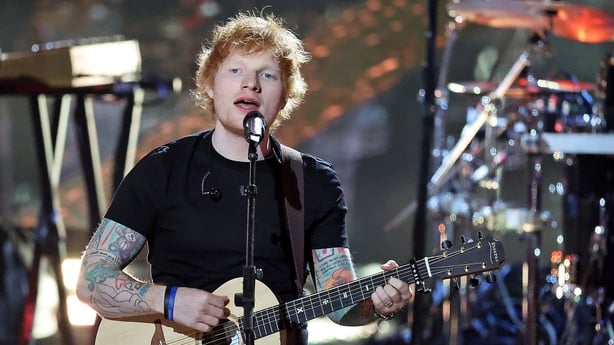
When you start looking and asking around, the one thing that keeps being raised is insurance.
According to Peter Aiken of Aiken Promotions, who of course put on a lot of the big gigs here, insurance costs is a major issue.
When there were complaints about the Bruce Springsteen tickets, he gave an example of the Ed Sheeran concerts in Cork, which he said cost €65,000 to insure. That compared to a €1,500 insurance bill for Sheeran’s show in Belfast.
More recently he said that insuring Rod Stewart’s gig in the 3Arena cost €10,000 – compared to £215 in the SSE in Belfast. And they’re two similarly-sized venues.
And we’ve heard about how the high cost of insurance is a huge problem for the events industry across the board.
Last month a number of tourism businesses were talking about the potential that they wouldn’t be able to operate this year because of the cost of insurance.
There have been changes to the rules to try to address this – and, according to the Alliance for Insurance Reform, there has been a significant reduction in the likes of personal injury claims, and awards, in recent years.
So far, though, that hasn’t translated through to lower prices from insurance providers.
It should also be said, though, that even in Peter Aiken’s example relating to Ed Sheeran, he said it added €1 to the cost of each ticket in Cork.
So as big of an issue as insurance may be for gigs, it alone doesn’t explain why we sometimes see significant differences in price.
So what else is at play?
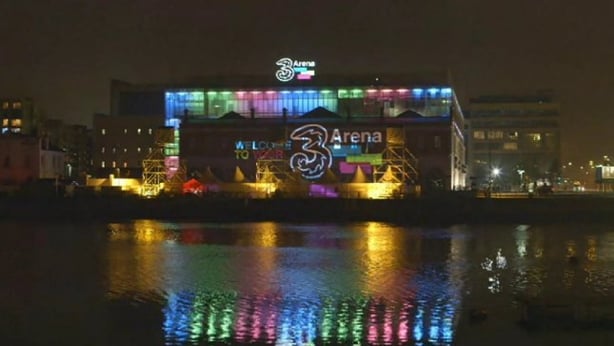
Well some of the factors mentioned before play a part.
If it costs you a lot of money to ship a concert here, and you’re limited by the size of the venues and the audience in general, you’re not going to be able to sell as many tickets for your Irish ‘leg’ as you would in Britain, France or Germany.
That means the per-ticket price has to go up to make it viable or profitable.
And as we know, Ireland – and particularly Dublin, where these gigs tend to take place – is fairly expensive in general.
So if you have to find hotel rooms for all of your crew, that’s going to cost a bit more per head than it would in other cities.
And apparently Irish venues themselves are more expensive to book than comparable places in other cities. That’s probably in part because there are very few options once you get beyond a certain size.
We have a relatively good selection of venues in the 1,000 to 2,000 seater capacity, particularly in Dublin, but once acts go above that their options narrow significantly.
The Point can hold 8,000 to 13,000 depending on the configuration, while the SSE Arena in Belfast can hold 11,000.
After that you’re likely into the outdoor venues; like the RDS, Croke Park, Páirc Uí Chaoimh, the Aviva, and so on.
And they don’t come cheap either – cost was claimed to be the reason why Croke Park wasn’t used for the Katie Taylor fight, though there were some unique challenges relating to boxing, particularly around security.
On top of that, outdoor venues are less than ideal for so much of the year because of bad weather. And when the weather is good they’re usually tied up with sports.
That leaves a very narrow window for gigs – and goes some way to explaining why so many Irish fields, parks and open spaces turn into gig and festival venues during the summer months.
And at the end of the day the promoters are looking to make money too…
Oh absolutely.
They may be facing higher costs here – but they’re obviously looking to make a profit too. They’re not a charity.
And, in fairness, organising concerts is a high-risk business.
There are a lot of moving parts and a lot that can go wrong – especially with outdoor venues, and big festivals.
And while some acts are sure things in terms of selling tickets – a lot of them aren’t, and you’re going to run the risk of having a half-empty stadium and maybe even a big loss.
The artists are looking to make money too, of course.
In fact gigs have now become an even more important part of the business for musicians, because steaming music means that they’re making an awful lot less from their actual albums than would have been the case 10 or 20 years ago.
A gig experience is one of the few things that can’t be copied or sold off for cheap – and it’s also a chance to sell expensive merchandise to your loyal fans too.
All that being said the Irish are pretty good gig-goers – and there are still plenty of acts that are going to be popular here no matter what.
And as much as we complain about ticket prices, we tend to pay them.
There wasn’t a ticket going spare for Bruce when he played here a few weeks ago!
How much money do the big promoters make?

Well we only have a partial picture in Ireland.
Data from Pollstar tells us that MCD Productions had revenues of $165 million last year.
Aiken Promotions had revenues of nearly $88 million.
Now that’s just revenue – it doesn’t tell us what, if any, actual profit the company took when all of the costs involved in organising and promoting events is taken away.
But, globally, we know that there’s a decent margin to be had in the industry.
Live Nation – which is the world’s biggest promoter – it owns Ticketmaster, and part-owns MCD here... it made a profit of $732 million last year, on the back of revenues of $16.7 billion.
And it’s in this really powerful position in many countries now – particularly in the US – where it owns the venues, the ticketing platform and is promoting the gig too.
How do the artists feel about that?
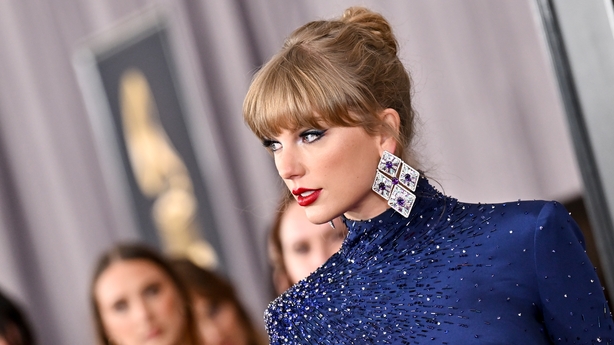
Well over the years there have been attempts to boycott the likes of Ticketmaster – Pearl Jam did it for a few years in the 90s – but ultimately they had to give up, because doing so excludes you from so many parts of the industry.
And that’s even more true now than it was 20 or 30 years ago.
But there have still been attempts to push back in more recent years.
When Live Nation decided to merge with Ticketmaster about 15 years ago, Bruce Springsteen was one of the voices opposed to it – saying it would reduce choice for consumers and push up prices.
But in his latest tour they’ve also been selling so called surge pricing tickets – where the price goes up based on demand – which seems a bit hypocritical on his part.
The Cure recently put a price cap on its tickets in order to make them accessible to fans with a smaller budget.
But in some cases their low price was effectively doubled by the charges that Ticketmaster added. Again, there’s only so much they can do about changing that without cutting themselves off from venues and customer-friendly ticketing options.
Maybe the best chance we have of any real change is through Taylor Swift.
She’s an artist with a huge amount of sway – she’s forced the likes of Apple Music and Spotify to change the way they do business.
And she recently lashed out at Ticketmaster after it made a mess of selling tickets to her new tour.
Her issue wasn’t price, but it did help shine a spotlight on the problems created by Live Nation and Ticketmaster’s dominance.
It also coincided with news that US competition regulators were looking into the competitive practices of Live Nation and Ticketmaster – which ultimately saw US politicians grill Live Nation officials, and many others acts talk about the control the company has over the US gig market.
There have even been calls for the company to be split up in order to improve consumer choice – though we’re probably a long way from seeing that actually happen.







